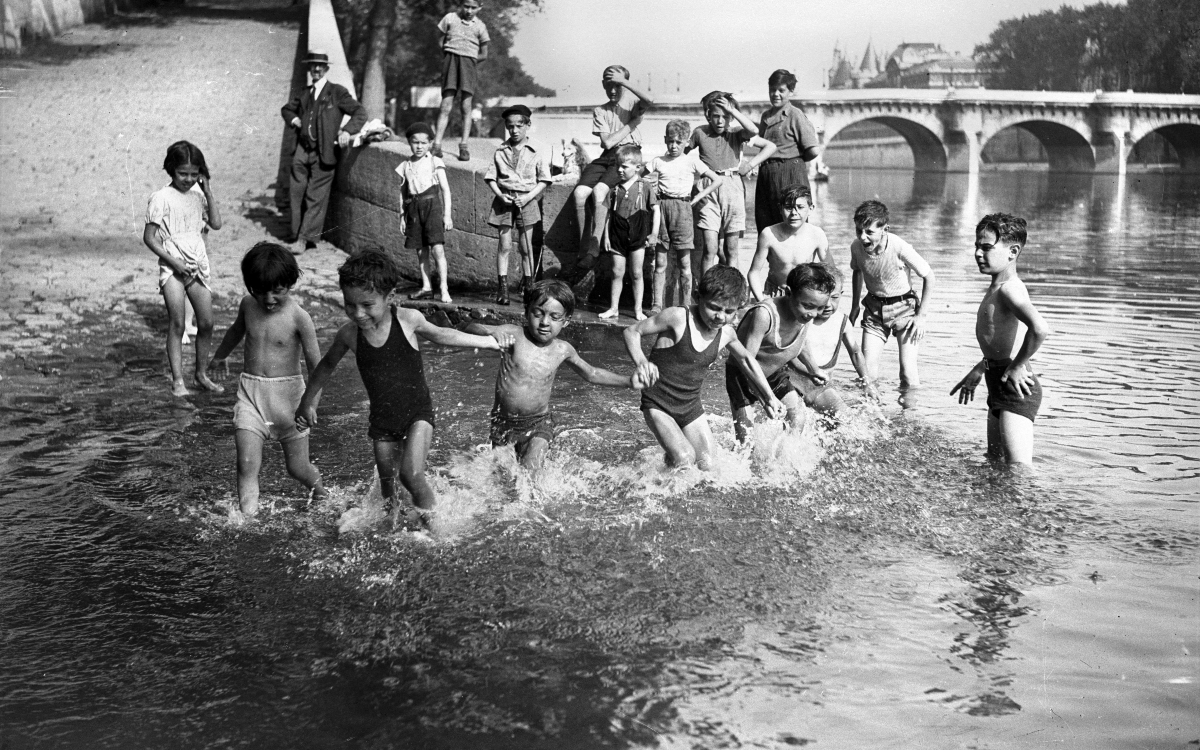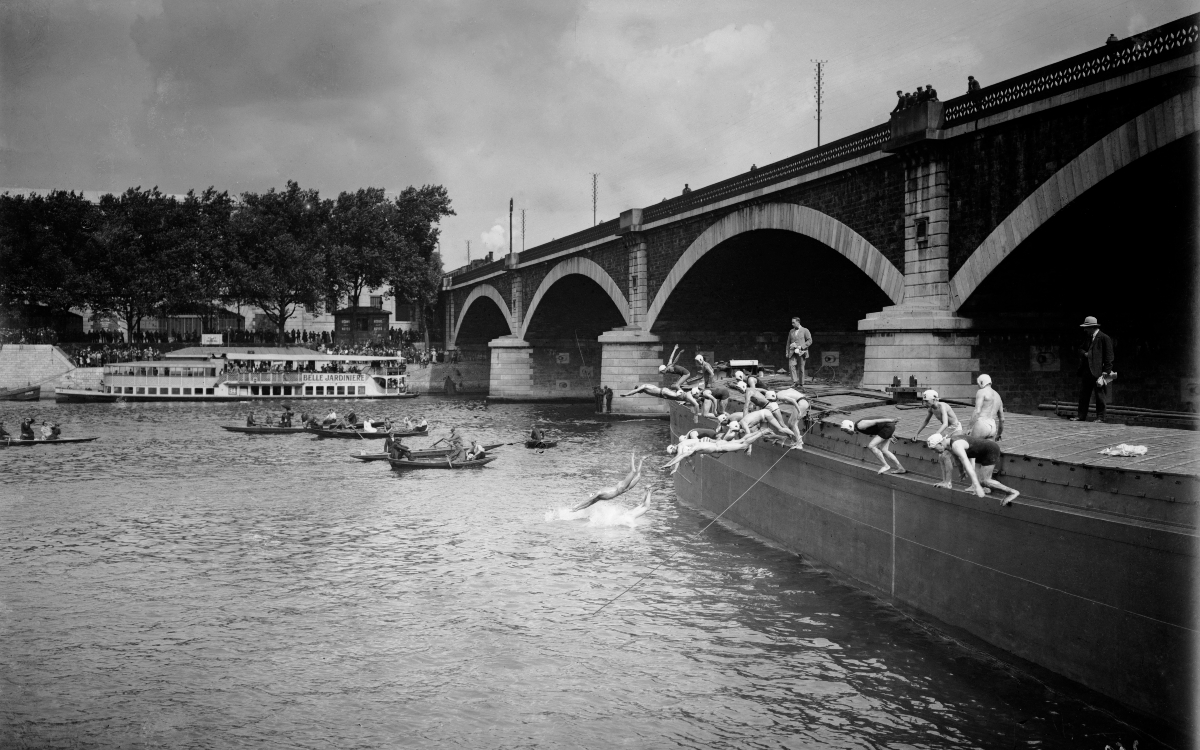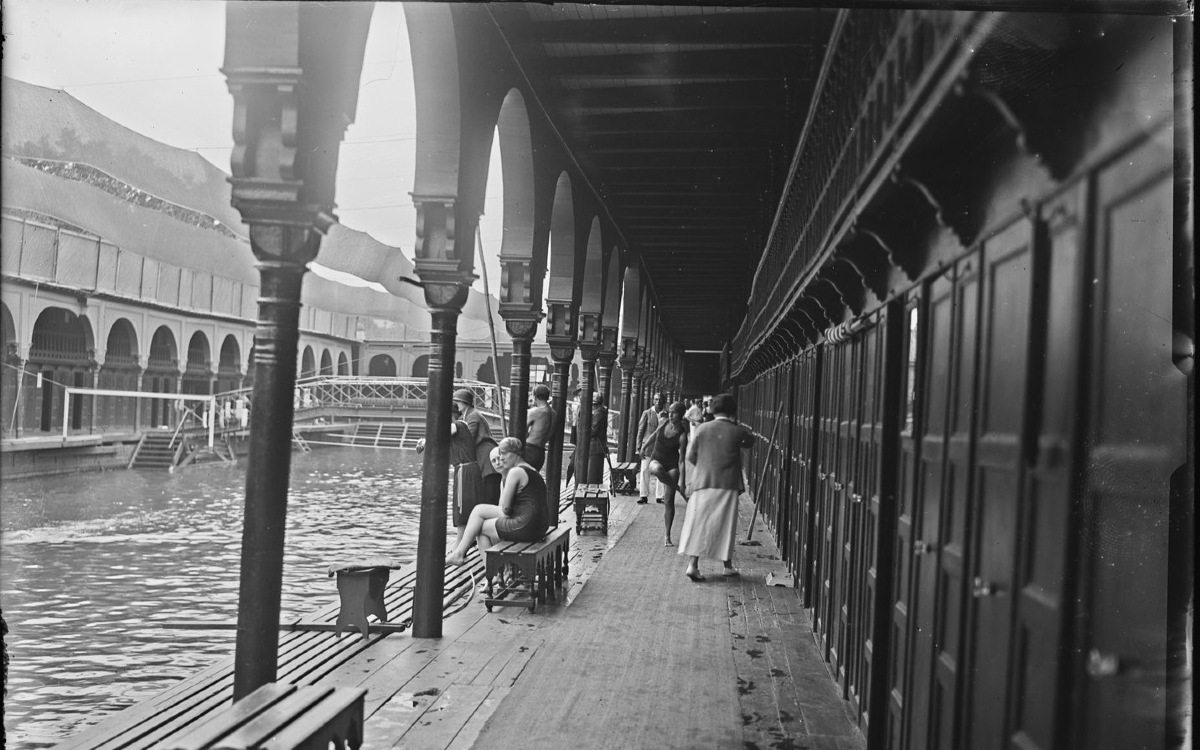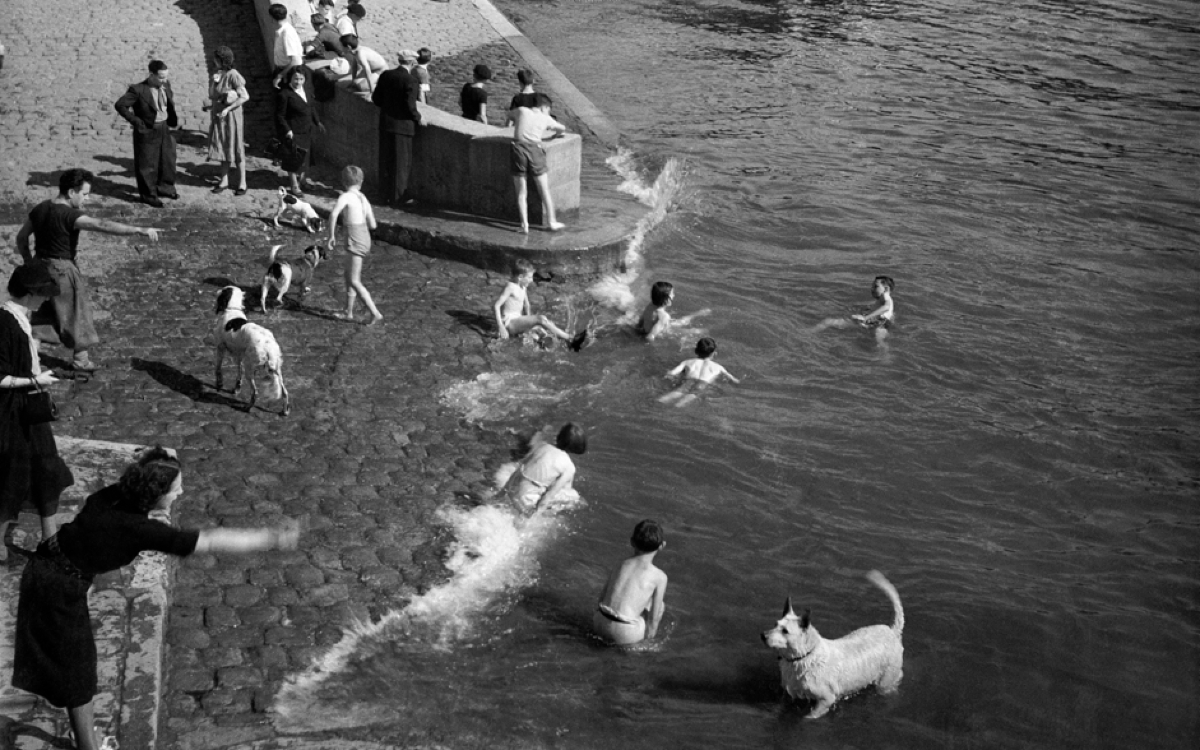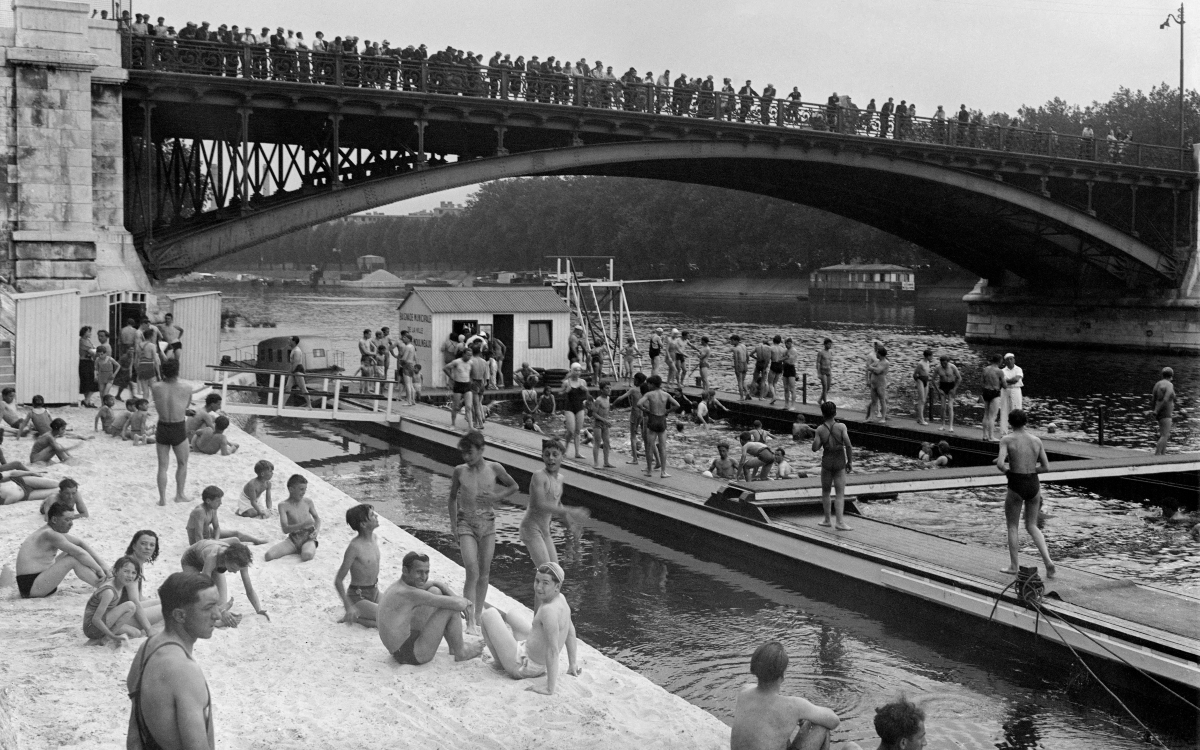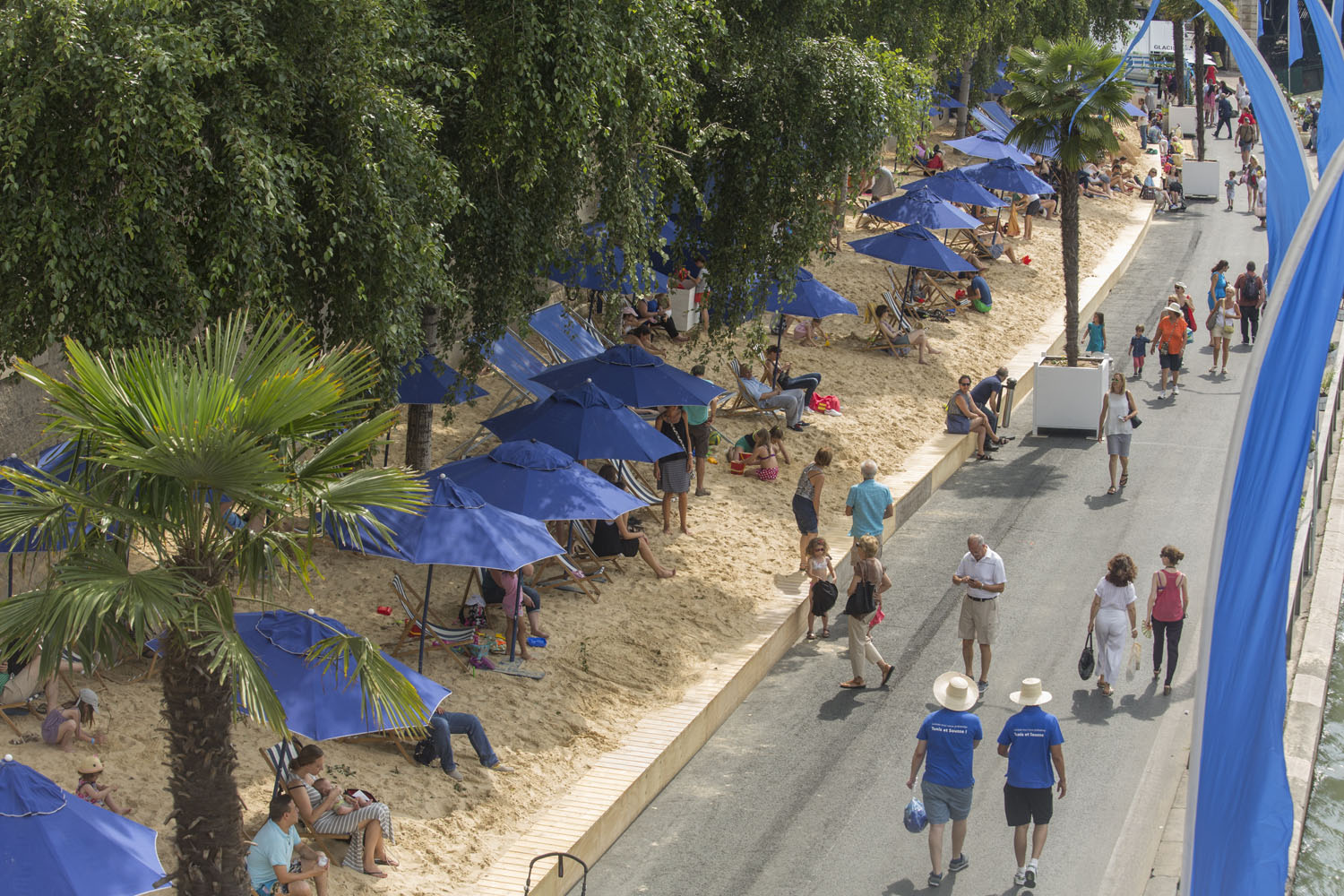Content
Cette page est aussi disponible en français
From 2025 onward, bathing in the Seine will be possible in Paris at three sites. This is thanks to a long and meticulous clean up project. Although it may not seem like it, swimming in the Seine is actually an old Parisian tradition. Here is a brief history of bathing in the Seine!
Swimming across Paris in 1943 (video)!
Vidéo Youtube
Back to basics?
On November 28th, 1988, Jacques Chirac, mayor of Paris at the time, declared:"I will bathe in the Seine in front of witnesses to prove that the Seine has become a clean river". This promise was meant for 1994 but it could not be kept. It would take another 36 years and the 2024 Olympic and Paralympic Games before the Seine would be made fit for bathing. In fact, the triathlon, para-triathlon and marathon swimming events will be held in the heart of the capital on the Alexandre III bridge, linking the 7th and 8th arrondissements.
What's more, by 2025, the river will be accessible to the general public at three specific points: the Marie arm (Paris Centre, Parc des Rives de Seine); the Grenelle arm, between the Port de Grenelle and the banks of Ile aux Cygnes (15th arrondissement); and Bercy, at the Passerelle Simone de Beauvoir, below the Parc de Bercy (12th arrondissement).
An old tradition is finally to be reborn!
Bathing was made popular in the 17th century
According to official archives, bathing became fashionable in the mid 17th century along the Quai Sully. Bathers would dress unclothed and men and women were kept apart by large canvas covers. By the end of the century, nude bathing was forbidden and bathers were required to be clothed. Bathers would also sit in boats filled with hot or cold water, like floating swimming pools. Men and women were still separated. Eventually, these floating structures were later replaced by bathhouses.
Swimming wasn't just for people though and dogs were also allowed to take to the water. Until the early 20th century, it was not uncommon to find professional dog washers and shearers on the quayside, bathing and grooming dogs.
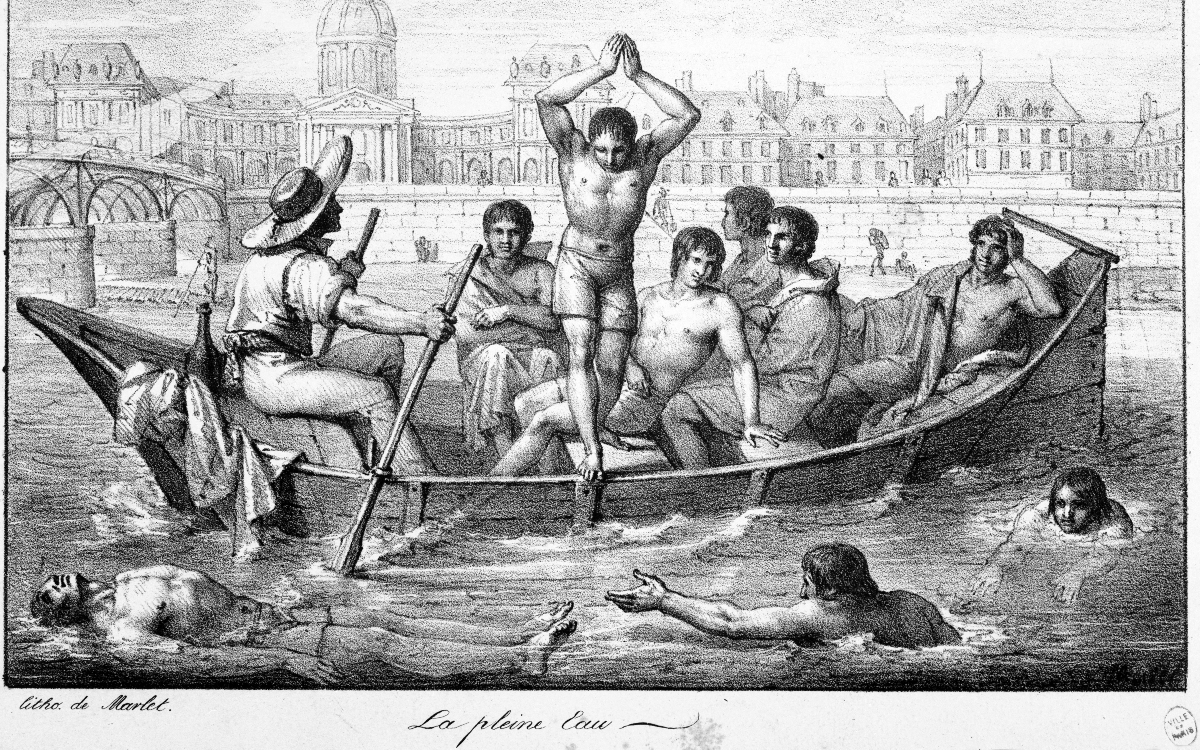
"Tableaux de Paris, number 55: la pleine eau", 1821. Engraving by Marlet. Paris, Carnavalet museum.
Credit
Musée Carnavalet / Roger-Viollet
Deligny the swimming instructor
Bathing in the Seine was soon structured and organized. In 1801, for example, the famous Deligny pool - named after one of the first swimming instructors who taught classes along the 7th arrondissement quays - was built on a dozen barges and filled with Seine water. By the end of the 19th century, there were around twenty floating pools similar to the Bassin Deligny.
Over time, land-based pools gradually took over, and the number of river pools diminished. Sadly, the Deligny pool sank in 1993. The City of Paris then decided to create the Joséphine Baker floating pool, which opened in 2006 on the Seine in the 13th arrondissement.
Despite the creation of these pools, people still bathed directly in the Seine. The French diving championships were even held in it on June 22nd, 1913.
In 1923 though, bathing in the river was made illegal under the penalty of a fine. This was due to the dangers caused by river navigation and pollution.
A gradual recovery
With the era of the car beginning in the 1930s, the banks of the Seine were turned into roads. In 1942, the road on the Quai Saint-Michel (5th arrondissement) was widened. The Quai Malaquais tunnel (6th arrondissement) was opened to traffic in 1946, and the right bank expressway was completed in 1967. Already though, resistance to "urban freeways" was emerging. The 1970s project to create a left-bank expressway at the foot of Notre-Dame gave rise to much controversy, and was finally abandoned in 1974.
Pedestrianizing the riverbanks…
In the early 2000s, a project to pedestrianize the river banks started. In 2001, the right bank lane was closed to motorized traffic from mid-July to mid-August. At the same time, the Paris Plages operation (2002) was launched on the freed up space. Soon, under the "Paris Respire" plan, the whole of the left bank lanes, as well as part of those on the right bank, were made available for "soft traffic" only on Sundays.
The pedestrianization process hasn't always been easy, especially from a legal perspective. But in 2015, the Paris Council announced that unilateral pedestrianization of the right bank would go ahead starting in 2018. With the creation of the "Parc Rives de Seine", seven kilometres of riverbank were pedestrianized with room for bicycles from Bastille to the Eiffel Tower.
In its decision, the Administrative Court noted that "the ban on motorized traffic imposed by the City of Paris is justified by the need to preserve the site as a UNESCO World Heritage Site". The banks of the Seine have been a UNESCO World Heritage site since 1991.
The left bank soon followed, with 10 hectares being converted into sidewalks.
… cleaning up the Seine
Cleaning up the Seine is the next big project ahead of the Olympic and Paralympic Games. The City of Paris has come together with a multitude of public authorities: the regional prefecture, departmental councils upstream and downstream of Paris, the Seine Normandy water agency, the Le Havre-Rouen-Paris port alliance, known as "Haropa". 1.4 billion euros have been budgeted to clean up the Seine.
The aim, above and beyond bathing, is to revitalize and protect the river's entire ecosystem. This involves bacteriological treatment of wastewater leaving treatment plants and eliminating the discharge of wastewater from buildings into watercourses which then end up in the Seine.
To clean up the river's course way, several structures are currently under construction, including the the Austerlitz stormwater storage basin, that has a capacity of around 50,000 m3 . It was completed in May 2024.
In early June 2023, Seine water analysis carried out on the basis of current European regulations produced "excellent results". From July 20th to August 11th 2023, 91% of daily measurements met the water quality threshold required by European law.
36 years after Jacques Chirac's famous statement, the dream could become true. Although, in the age of climate change, the project has become even more ambitious. The aim is to transform the Seine into a veritable ecological corridor.
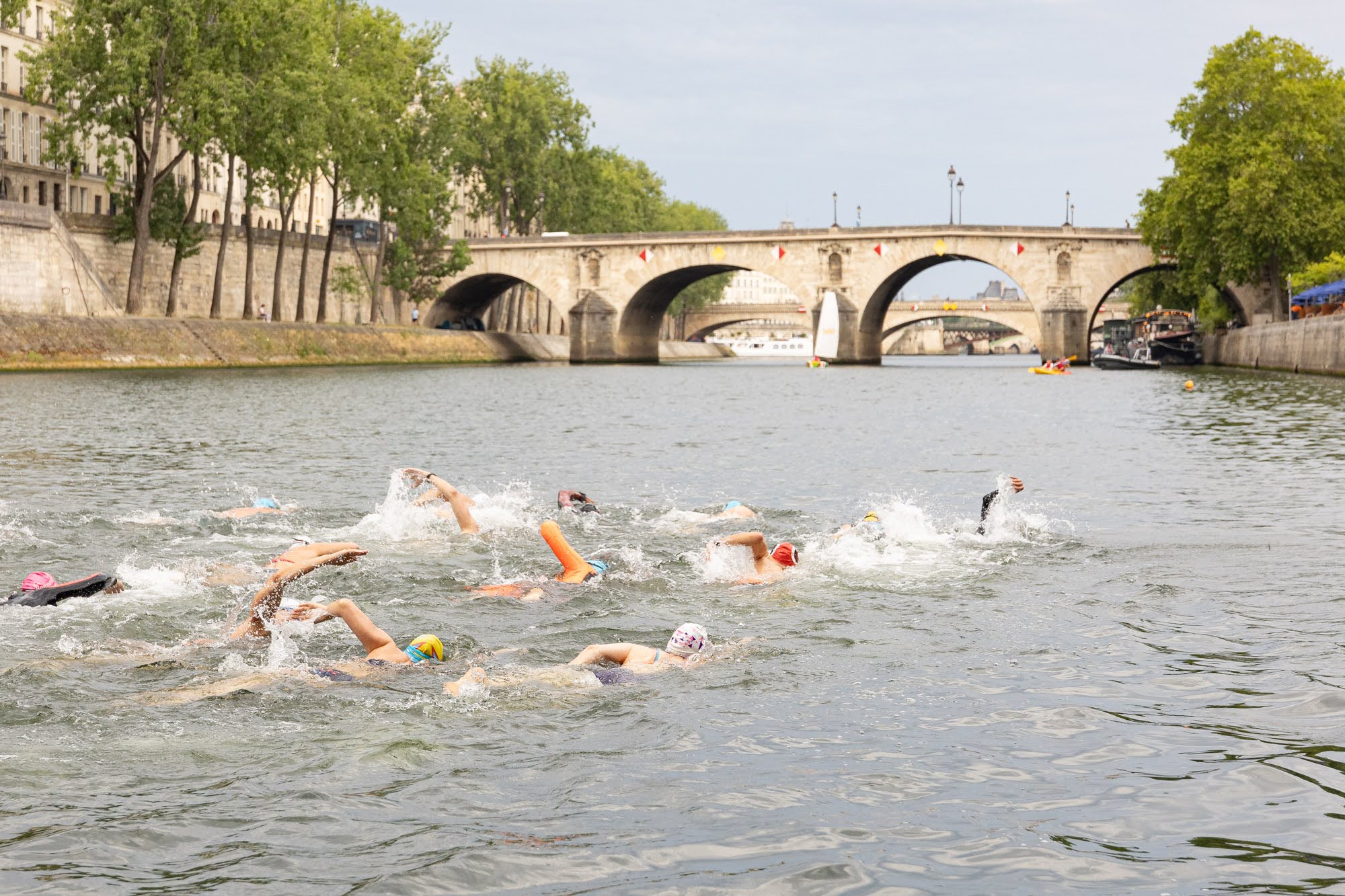
A swimming event was organized in early July at Bras Marie, which offers Parisians free water activities every Sunday in August.
Credit
Guillaume Bontemps / Ville de Paris
Get
all the news on disruptions and opportunities related to the Games with the
Paris Infos Jeux 2024 newsletter.
We want to hear from you!
Was this information useful to you?
Please note: we cannot reply via this form (please do not include any personal information).
